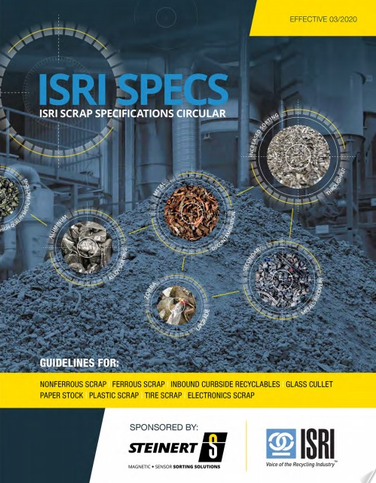The Federal Reserve recently signaled an interest rate increase sooner than expected and lifted its inflation forecasts for 2021 and 2022. Following the Fed’s June 17 board meeting, prices for commodities and other assets have become more volatile. Joe Pickard, ISRI’s chief economist and director of commodities, and Bret Biggers, ISRI’s senior economist analyze what the announcement means, and how it may affect the recycling industry.
The Federal Open Market Committee (FOMC) left the short-term borrowing rate near zero, but officials indicate rate hikes could begin in 2023—sooner than 2024, the timeframe the Fed signaled in its March meeting. “If they’re going to raise rates in 2022 or 2023 as opposed to further out, that’s going to impact the equity and commodity markets, the economy overall, and the U.S. dollar,” Pickard says.
The Fed raised its headline inflation projection to 3.4%, a full percentage point higher than its March projection. However, it considers the inflation pressures to be “transitory,” and largely due to the problems facing U.S. supply chains. The Fed expects those issues will work themselves out and inflation will be temporary. “That’s why the Fed’s not saying it’s going to raise rates now or in the near future—because they think that these inflationary pressures are transitory,” Pickard explains.
He sees the Fed’s inflation prediction largely in line with the numbers in the consumer price index (CPI) and producer price index (PPI) on inflation. The CPI increased 0.6% in May compared to April. Over the last 12 months, the all-items index increased 5% before seasonal adjustment, the largest 12-month increase since a 5.4% increase for the period ending August 2008. The PPI increased 0.8% in May compared April. On an unadjusted basis, the final demand index advanced 6.6% for the 12 months ended in May, the largest increase since 12-month data first were calculated in November 2010.

“The big concern for our members would be if the Fed couldn’t get inflation under control as we saw it start to spiral upwards; then the Fed would have to take aggressive action,” Pickard says. The Fed could increase interest rates significantly and could also stop or slow down monetizing U.S. debt (known as quantitative easing or QE). In essence, these two tools would lower demand for goods and services, and thereby lower inflation, Biggers says. Such actions could cause an economic slowdown, which would put a break on commodity prices and higher borrowing rates. “It’s because bank rates are based off of the targets the Fed sets, and that could raise the cost of borrowing for capital investment, and raise the cost of doing business,” Pickard says.
While the Fed indicated interest rates wouldn’t change in the short term, the announcement itself puts the market on edge. “When the Fed talks, it uses generalities instead of concrete numbers: ‘We may do this in the long term,’ or ‘We may do that in the short term,’” Biggers explains. Though the Fed doesn’t want to upset or dictate to the marketplace, markets still react to these statements. “Seeing that the Fed is going to raise the rate sooner than expected gets them alarmed, even though it’s a year and a half out,” Biggers adds.
Pickard recommends market participants pay attention to what’s going on outside FOMC meetings. Testifying at a Senate subcommittee on the Biden administration’s budget proposal on Wednesday, June 23, Treasury Secretary Janet Yellen said that as supply bottlenecks get straightened out, inflation should lower from its current high levels by the end of 2021. “Yellen recently talked about how she thought the inflationary pressures were transitory as well,” Pickard says. “It’s more than just what happens at the FOMC meeting; it’s also the statements from other monetary policy officers throughout the course of the month.”
Photo courtesy of AgnosticPreachersKid, CC BY-SA 3.0, via Wikimedia Commons.













